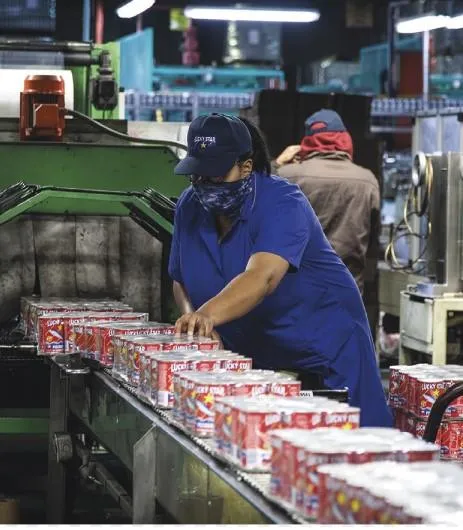Higher hake catches and strong Lucky Star sales drives Oceana Group's profit growth
FOOD MANUFACTURING

Workers at a Lucky Star fish processing plant in the Western Cape.
Image: Supplied
The Oceana Group’s operating profit increased by a striking 58% for the year to September 30 after the performance benefited from a strong turnaround in the Wild Caught Seafood segment and steady Lucky Star Foods results.
Headline earnings per share fell 38%, in line with expectations, after these benefits were offset by halving fish oil prices and after a higher interest bill. A total dividend of 285 cents a share was declared, 42.4% lower than the previous year.
“We have controlled what we can well, most key indicators improved. The African and US fishmeal and fish oil businesses saw strong operational performances, but softer global fish oil prices impacted revenue and profitability. Lucky Star Foods was solid as ever, and the Wild Caught Seafood segment delivered a turnaround, with operating profit significantly higher. It demonstrates the resilience of our diversified business model,” said the CEO Neville Brink in a statement.
The hake business produced “an excellent performance and record earnings,” in the Wild Caught Seafood segment, said Brink.
The benefits of the investment in the hake fleet were evident - more reliable vessels were able to spend more days at sea. This allowed the fleet to achieve 33% higher catch volumes, driving unit catch costs lower.
Sales volumes increased, and strong European demand resulted in improved export prices for hake, said Brink.
Group revenue decreased by 1% to R10 billion as global fish oil prices normalised, following the recovery of the Peruvian anchovy resource. Operating profit fell 23% to R1.3bn, while taxed profit was down 35% to R724 million, largely due to higher interest costs.
Brink said demand for Lucky Star as an affordable, available source of protein contributed to its performance. Despite a tough consumer environment in South Africa, sales volumes grew by 2% to 9.5 million cartons.
Strong export demand and expansion into canned meats drove higher sales, growing canned food’s share to nearly 10% of Lucky Star’s total sales volumes.
A 24% increase in the number of cartons produced lowered unit production costs. There was an extended shutdown for factory upgrades in the previous financial year.
Efficiency gains from upgrades and stable frozen fish imports caused production yields to rise by 6%, Local pilchard landings increased. Canned meat production volumes doubled.
The African fishmeal and fish oil business reported production volumes up by 25%, with better industrial fish landings, higher pilchard trimmings from the canneries and improved fish oil yields.
A 36% increase in sales volumes was negated by US dollar prices declining 9% for fishmeal and 53% for fish oil.
Daybrook’s performance, although lower than the previous year’s record, was good compared to its long-term earnings average. Gulf menhaden landings increased by 20%, with a slight reduction in fish oil yield.
This performance and higher opening inventory levels led to a 54% increase in fish oil sales volumes. Fishmeal sales volumes fell slightly. Daybrook experienced similar pricing challenges to the African business, with US Dollar prices down 9% for fishmeal and 48% for fish oil.
Brink said Lucky Star Foods would continue to benefit from growing demand for affordable protein, using its brand and distribution network to expand in South Africa and cross-border markets, while pursuing opportunities in adjacent food categories.
Improvements in global pricing for fishmeal and fish oil were anticipated, after a lower-than-expected anchovy quota in Peru’s second season.
The Wild Caught Seafood segment was expected to benefit from sustained demand across all species and improving resource availability in South African waters, he added.
BUSINESS REPORT